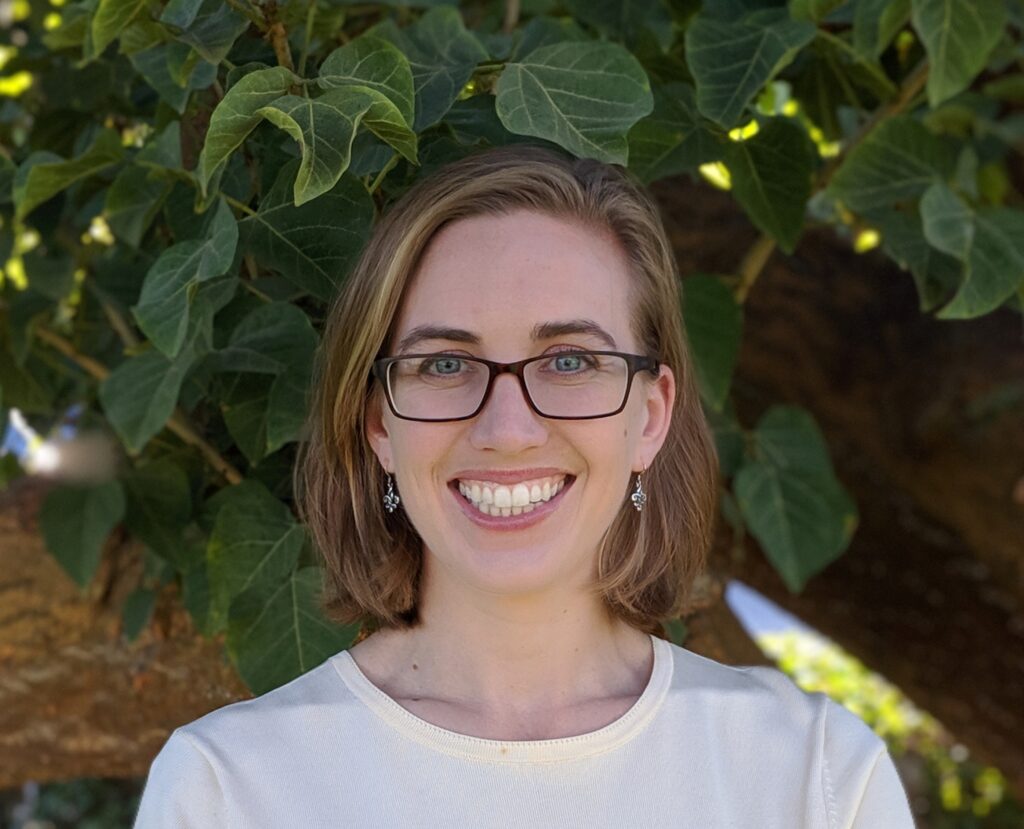Alumni Spotlight – Claire McLellan
Meet Dr. Claire McLellan, Wake Forest Physics Major class of 2012. Dr. McLellan is now a Senior Physical Scientist at the United States Government Accountability Office. In the following interview Professor Macosko discusses with Dr. Mclellan her career path and experiences as a student.

Prof. Macosko: What are you doing now career-wise?
Dr. McLellan: I am a Senior Physical Scientist at the United States Government Accountability Office (GAO) in the Science, Technology Assessment, and Analytics team. (The opinions and views expressed in this article are the author’s alone and are not intended to reflect GAO’s institutional views)
Prof. Macosko: What did you do right out of Wake Forest?
Dr. McLellan: Right out of Wake Forest I went to physics graduate school and obtained a Ph.D. from the University of California at Santa Barbara. I worked on developing magnetic imaging on the micrometer scale. In magnetic imaging, rather than taking a picture where each pixel shows what color a specimen is, each pixel shows how strong the magnetic field was at that location. Magnetic imaging has applications from measuring magnetic fields of neurons to mapping magnetic domains in hard drive materials. The magnetic sensor I used was a defect in diamond called the nitrogen vacancy center. To pursue this research I learned how to grow diamond, build a confocal microscope, and understand the quantum physics that underpins how the system works.
Prof. Macosko: How did Wake Forest Physics help you get where you are today?
Dr. McLellan: My professional journey has required me to learn new scientific sub-fields multiple times. At my current job, I need to learn a new topic in science every year. Wake Forest physics gave me the skill set to learn new topics and push myself to recognize what I don’t understand. Presenting journals during group meeting in Oana Jurchescu’s lab taught me how to understand a paper and also ask questions so I could find the parts I didn’t understand. In classes, if I found a problem set to be easy, professors would often give me harder problems so I could grow. When I found problem sets to be challenging, I could work with my classmates and professors to learn how to approach the problem. Being able to ask questions and understand the limitations of my knowledge so I know where I can grow has been incredibly helpful.
Prof. Macosko: Do you have an anecdote you would care to share either from your time at Wake Forest physics or from afterward relevant to Wake Physics?
Dr. McLellan: I have many wonderful memories of Wake Forest physics, but one that always comes to mind was when I received feedback on a lab report I wrote for an optics course. Prof. Williams called me to his office to discuss my write-up. The first thing he said was along the lines of appreciating that I did not cheat. I remember my heart dropped thinking how bad this report must be if the only thing the professor can say is that I had clearly attempted an experiment. In fact, I had completely messed up the assignment, putting the lenses in the wrong order so that what I had measured was from an artifact in my set-up. Prof. Williams then took the time to go to the optics lab with me and go through the entire experiment, so I understood it. Having him take the time to make sure I understood the assignment made me really interested in optics. I chose research that heavily relied on optics for graduate school and my post-doctoral work.
Prof. Macosko: Is there anything you would like to share with prospective or current students?
Dr. McLellan: Wake Forest physics gave me a strong physics foundation but the liberal arts education Wake Forest provided has been equally important for my career and life. I appreciate how the theater, history, literature, sociology, and many other courses gave me different ways to view and interpret the world. I encourage students to enjoy exploring all of the different courses available.
